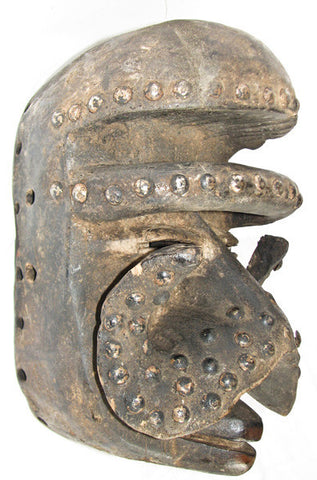ArtTribal.com
Dan-Bete Gre Mask
ArtTribal.com
Sold
Bete carvers are renowned for one particular type of face mask, the gre or nyabwa , which has exaggerated, grimacing distorted features – a large protruding mouth, facial protuberances, bulging forehead, elongated nose, with nostrils sometimes extending to each side of the face, and globular or bulging slit eyes set beneath a high-domed forehead carved with a medium ridge. In earlier days, this mask presided over the ceremony held when peace was restored after armed conflicts and it participated in sessions of customary justice. This type of mask was also worn to prepare men for war; the masks offered magical protection by instilling fear and terror in potential enemies. Nowadays, it is worn for a variety of ceremonies, including entertainment dances.
The Bete are divided into ninety-three groups. Lacking centralized power, the Bete were grouped together in relatively major villages, containing several lineages. Each lineage had a totemic animal whose meat was taboo. The most senior member of the lineage exercised a moral and judicial power, notably in terms of awarding land. The Bete, who ascribed more importance to the hunt than to agriculture, grew only what was needed for their subsistence economy
A stand for this mask is available separately
Product Details:
- Size: 11" x 7"
- Shipping: $50.00
- Material: Wood, nails
- Quantity: Sorry, this product is not available
- SKU:


